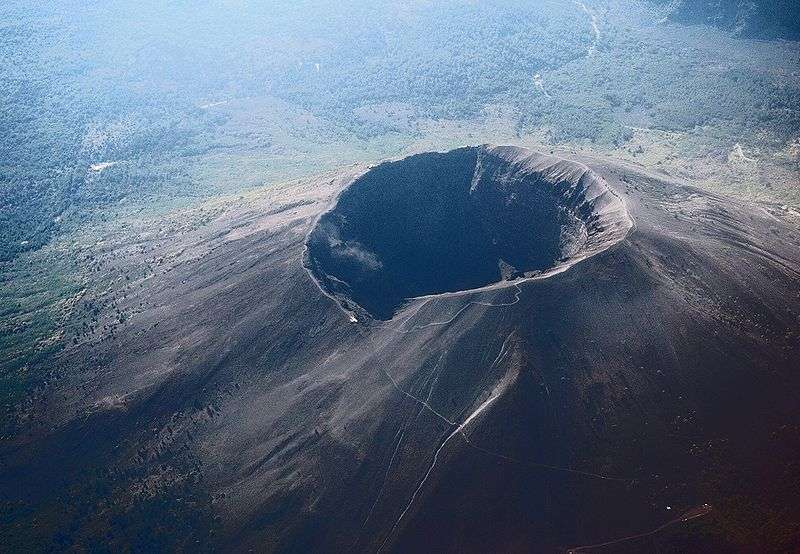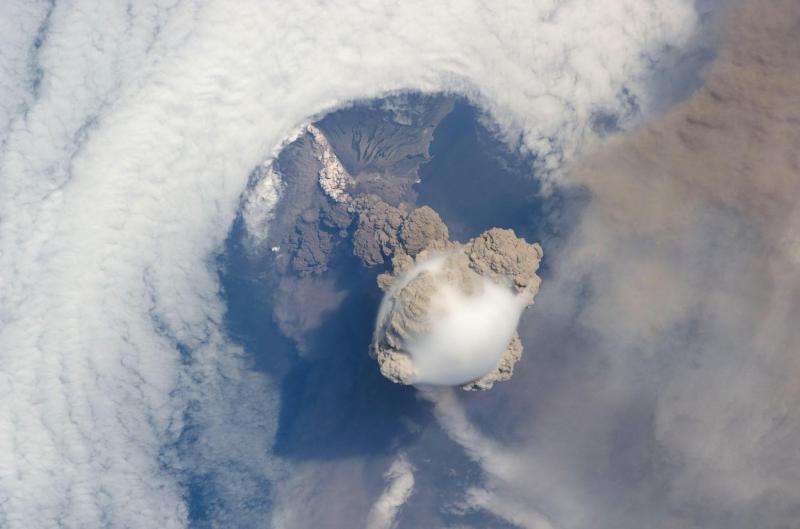A Volcano That Hasnt Erupted in a Long Time and Is Unlikely to Erupt Again Is Called

Volcanoes are an impressive strength of nature. Physically, they boss the landscape, and have an active part in shaping our planet'due south geography. When they are actively erupting, they are an extremely dangerous and subversive force. But when they are passive, the soil they enrich can go very fertile, leading to settlements and cities existence built nearby.
Such is the nature of volcanoes, and is the reason why we distinguish betwixt those that are "active" and those that are "dormant". But what exactly is the differences between the two, and how do geologists tell? This is actually a complicated question, because there's no way to know for sure if a volcano is all washed erupting, or if information technology's going to become active again.
Put just, the most pop fashion for classifying volcanoes comes down to the frequency of their eruption. Those that erupt regularly are called agile, while those that have erupted in historical times but are now placidity are called dormant (or inactive). But in the end, knowing the difference all comes downwardly to timing!
Agile Volcano:
Currently, there is no consensus among volcanologists about what constitutes "agile". Volcanoes – like all geological features – can have very long lifespans, varying betwixt months to even millions of years. In the past few thousand years, many of Earth's volcanoes have erupted many times over, but currently show no signs of impending eruption.
As such, the term "active" can mean only active in terms of human lifespans, which are entirely unlike from the lifespans of volcanoes. Hence why scientists often consider a volcano to be active only if it is showing signs of unrest (i.east. unusual earthquake activity or significant new gas emissions) that mean it is about to erupt.
The Smithsonian Global Volcanism Programme defines a volcano equally agile only if information technology has erupted in the last 10,000 years. Another means for determining if a volcano is agile comes from the International Association of Volcanology, who use historical time as a reference (i.eastward. recorded history).

Past this definition, those volcanoes that have erupted in the course of human being history (which includes more than 500 volcanoes) are defined equally agile. Notwithstanding, this also is problematic, since this varies from region to region – with some areas cataloging volcanoes for thousands of years, while others merely take records for the past few centuries.
As such, an "agile volcano" can be best described equally ane that'southward currently in a state of regular eruptions. Perchance it's going off right now, or had an outcome in the last few decades, or geologists expect it to erupt over again very presently. In short, if its spewing fire or likely to again in the near future, then it'south agile!
Dormant Volcano:
Meanwhile, a dormant volcano is used to refer to those that are capable of erupting, and will probably erupt once more in the time to come, just hasn't had an eruption for a very long time. Hither too, definitions go complicated since it is hard to distinguish between a volcano that is simply non active at nowadays, and one that will remain inactive.
Volcanoes are often considered to be extinct if in that location are no written records of its activeness. All the same, volcanoes may remain dormant for a long menstruation of time. For instance, the volcanoes of Yellowstone, Toba, and Vesuvius were all thought to be extinct before their celebrated and devastating eruptions.
The aforementioned is true of the Fourpeaked Mountain eruption in Alaska in 2006. Prior to this, the volcano was thought to exist extinct since it had not erupted for over 10,000 years. Compare that to Mountain Grímsvötn in south-due east Iceland, which erupted three times in the past 12 years (in 2011, 2008 and 2004, respectively).
And so a fallow volcano is actually role of the active volcano classification, it's simply that it's not currently erupting.

Extinct Volcano:
Geologists also utilise the category of extinct volcano to refer to volcanoes that take become cutting off from their magma supply. In that location are many examples of extinct volcanoes effectually the world, many of which are found in the Hawaiian-Emperor Seamount Concatenation in the Pacific Sea, or stand individually in some areas.
For case, the Shiprock volcano, which stands in Navajo Nation territory in New Mexico, is an case of a solitary extinct volcano. Edinburgh Castle, located just outside the capitol of Edinburgh, Scotland, is famously located atop an extinct volcano.
But of course, determining if a volcano is truly extinct is often hard, since some volcanoes tin can have eruptive lifespans that measure into the millions of years. As such, some volcanologists refer to extinct volcanoes equally inactive, and some volcanoes once thought to be extinct are now referred to as fallow.
In curt, knowing if a volcano is active, dormant, or extinct is complicated and all comes down to timing. And when it comes to geological features, timing is quite difficult for us mere mortals. Individuals and generations have limited life spans, nations rising and autumn, and even entire civilization sometimes bite the dust.
Merely volcanic formations? They can endure for millions of years! Knowing if there withal life in them requires difficult piece of work, adept record-keeping, and (above all) immense patience.
Citation: What is the difference between agile and dormant volcanoes? (2016, September 19) retrieved 15 May 2022 from https://phys.org/news/2016-09-difference-dormant-volcanoes.html
This certificate is subject to copyright. Apart from any fair dealing for the purpose of private report or inquiry, no part may be reproduced without the written permission. The content is provided for data purposes only.
Source: https://phys.org/news/2016-09-difference-dormant-volcanoes.html
0 Response to "A Volcano That Hasnt Erupted in a Long Time and Is Unlikely to Erupt Again Is Called"
Post a Comment